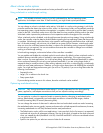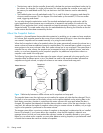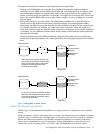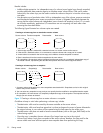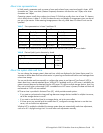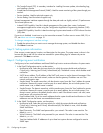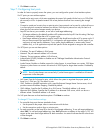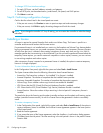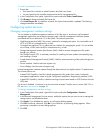HP StorageWorks 2000 G2 Modular Smart Array Reference Guide 27
About data protection in a single-controller storage system
A 2000 G2 Modular Smart Array storage system can be purchased or operated with a single controller.
Because single-controller mode is not a redundant configuration, this section presents some considerations
concerning data protection.
A volume’s default caching mode is write back, as opposed to write through. In write-back mode, data is
held in controller cache until it is written to disk. In write-through mode, data is written directly to disk.
If the controller fails while in write-back mode, unwritten cache data likely exists. The same is true if the
controller enclosure or the target volume's enclosure is powered off without a proper shut down. Data
remains in the controller's cache and associated volumes will be missing that data. This can result in data
loss or in some cases volume loss; for example, if using snapshot functionality a snap pool might become
inaccessible and the master volume could go offline.
If the controller can be brought back online long enough to perform a proper shut down, the controller
should be able to write its cache to disk without causing data loss.
If the controller cannot be brought back online long enough to write its cache data to disk, you can move
its CompactFlash cache card to a replacement controller. This enables the cache data to be available
when the new controller comes online. The CompactFlash card is externally accessible from the back of the
controller.
To avoid the possibility of data loss in case the controller fails you can change a volume's caching mode to
write through. While this will cause significant performance degradation, this configuration guards against
data loss. While write-back mode is much faster, this mode is not guaranteed against data loss in the case
of a controller failure. If data protection is more important, use write-through caching; if performance is
more important, use write-back caching.
For details about caching modes see About volume cache options on page 19. To change a volume’s
caching mode, see Changing a volume's cache settings on page 44.



